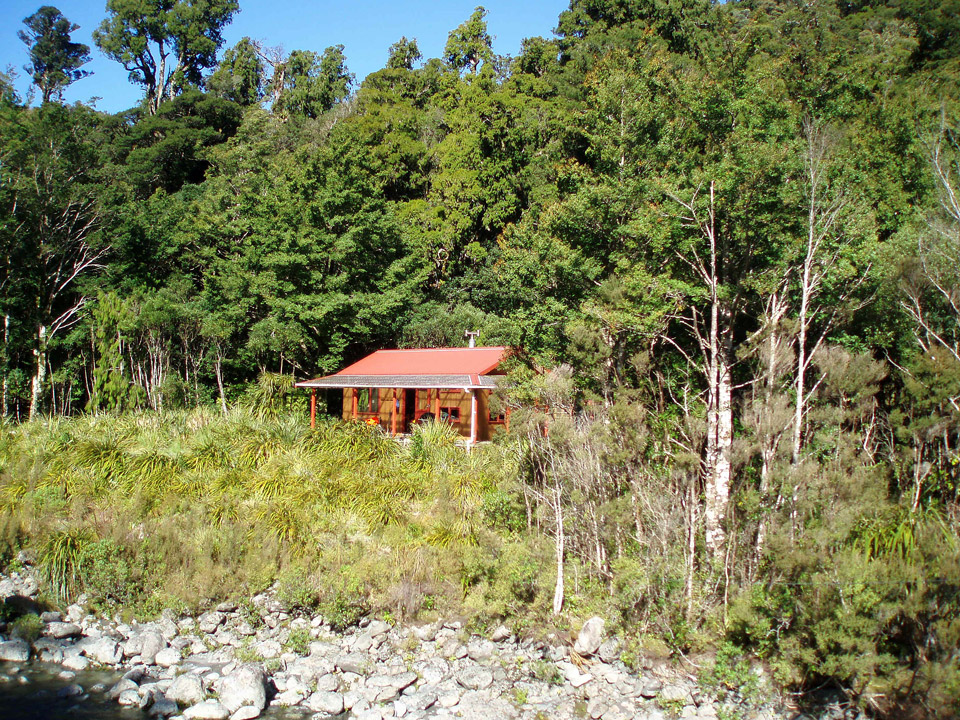Have you ever been tramping with a leader who carries a textbook and binoculars in their pack? Illona Keenan is one such leader. She led Andrei, Caryl, Claire, David, Erika, Kerry, Mark and Rachel up the Mangatainoka River and over a ridge into the Ruamahanga on an overnight fauna and flora extravaganza to Roaring Stag Hut.

She introduced herself as an ecologist, and she introduced the route to Roaring Stag as a 4 hour walk, which can be done in two, but we were going to take six! This was because we would be stopping frequently to look at, feel, sniff and discuss the foliage, bark, seeds, flowers and distinctive, sometimes not so distinctive, features and characteristics of trees along the way. Andrei (‘Can you eat that?’) was also keen to taste, but was frequently reminded by Illona that sampling the fruits of the forest was not an option on this trip.
The steepness of the climb up the ridge from the Mangatainoka River was made significantly easier by regular stops to study, ask questions and talk about trees. Illona was enthusiastic, patient and knowledgeable and was not too proud to refer to her book when our questions called for it. We learned that tree pairs rimu and kahikatea; miro and matai; kanuka and manuka are very similar but can be distinguished relatively easily, particularly if a pair is standing side by side. Claire frequently challenged Illona for more definitive guidance, and got the award for unwavering interest. We also learned that the first two pairs of trees in this group of podocarp have their own gender – they are either male or female.

After a hearty meal that evening at Roaring Stag Hut, we waited for darkness and then, armed with headlamps and binoculars, we set off after our leader to see the nightlife. We all had real trouble finding it, but Illona’s persistence won the night when she spotted the blue eye reflection of one very tiny spider from about 5 metres away.

This discovery renewed Illona’s determination to find freshwater crayfish. She disappeared again up several streams, and at one point I was beginning to wonder if she would be coming back any time soon. She did finally return, and we walked back to the hut having concluded that the recent strong winds and heavy rains had sent most of the fauna into hiding.
The following morning, at 8.00 am, we started our return trip, reaching the road end just over four hours later. After a quick bit of lunch we piled into the van and were back in Wellington by around 3.00 pm. Thanks Illona for your energetic leadership, and thanks to everyone for pitching in with Saturday night’s dinner preparations. What a team!
